#computational theory
Explore tagged Tumblr posts
Note
Favorite genre of math?
I’m a huge slut for number theory. There’s so much cool shit there.
Non-Euclidean Geometry was also super interesting.
And with my computer science degree as well, I of course really like Computational Theory, which is right on the line between math and computer science.
#math nerd#anonymous#asks#number theory#non-euclidean geometry#comp theory#computational theory#on my soapbox
3 notes
·
View notes
Text
Universality

Universality is a profound and foundational concept in science and mathematics that describes the property by which systems with vastly different microscopic details exhibit the same macroscopic behavior. It is most prominently observed in the study of critical phenomena in statistical mechanics, but it also emerges across a wide range of disciplines, including condensed matter physics, dynamical systems, chaos theory, mathematics, computer science, and even certain branches of economics and biology. The notion of universality provides a framework for understanding how complex behavior can emerge from simpler rules and how such behavior can be characterized independently of specific details, relying instead on symmetries, dimensions, and collective properties.
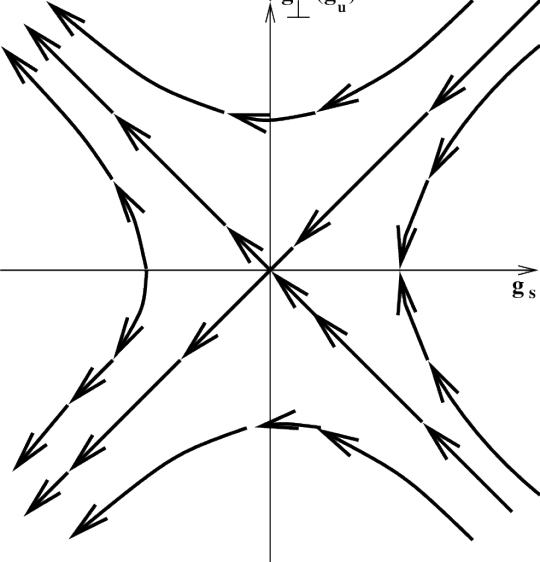
The concept of universality originated in the mid-20th century, particularly in the context of phase transitions in statistical physics. Physicists observed that vastly different physical systems—such as magnets near the Curie point and fluids near the liquid-gas critical point—exhibited strikingly similar behavior near their respective critical points. This was paradoxical because the underlying microscopic interactions in these systems were entirely different.
The resolution of this paradox came with the development of the renormalization group (RG) theory, primarily by Kenneth Wilson in the 1970s. RG provided a rigorous framework to explain how systems at different scales could be related through scale transformations, and how certain large-scale behaviors are invariant under these transformations. Universality emerged naturally from this framework: systems that flow toward the same fixed point in the space of physical theories under RG transformations exhibit the same critical exponents and scaling laws, regardless of their microscopic details. This laid the foundation for a deep understanding of universality and marked a turning point in theoretical physics.
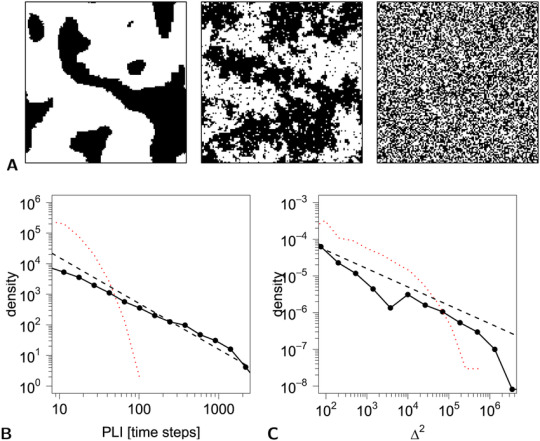
A central feature of universality is the classification of systems into universality classes. These are groups of systems that, despite differences in their microscopic structures or interactions, share the same set of critical exponents, scaling functions, and general behavior near criticality.
The primary determinants of universality classes are:
Dimensionality of the system – The number of spatial dimensions significantly affects the critical behavior of a system. For example, the Ising model in two dimensions has different critical exponents than in three dimensions.
Symmetry of the order parameter – The nature of the symmetry breaking involved in the phase transition plays a key role. The Ising model, with a discrete Z2 symmetry, belongs to a different universality class than models with continuous symmetries like O(N) (e.g., the XY and Heisenberg models).
Range of interactions – Systems with short-range interactions often belong to different universality classes than those with long-range interactions.
Conservation laws and dynamics – In dynamical systems, the conservation or non-conservation of order parameters (such as energy or magnetization) can define dynamic universality classes distinct from their static counterparts.
Examples of well-known universality classes include the Ising universality class (scalar order parameter with Z2 symmetry), the XY universality class (vector order parameter with U(1) symmetry), and the Heisenberg universality class (vector order parameter with SO(3) symmetry).
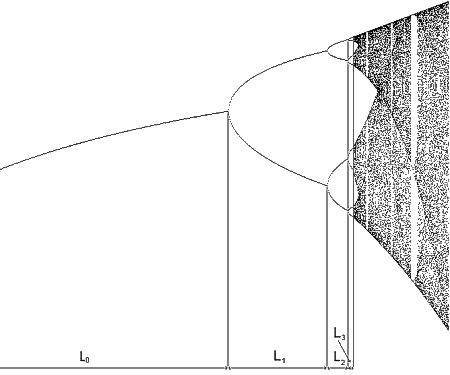
The renormalization group (RG) formalism is essential to the modern understanding of universality. It describes how physical systems behave under changes in scale, allowing for the systematic "coarse-graining" of microscopic details while retaining the large-scale features that determine macroscopic behavior.
The key idea in RG is that as one examines a system at increasingly larger scales, the effective parameters governing the system’s behavior flow under RG transformations. At critical points, these flows approach fixed points, which correspond to scale-invariant behavior. Systems that flow toward the same fixed point share universal properties—hence the emergence of universality.
In this context, critical exponents describe how physical quantities diverge near the critical point (e.g., specific heat, susceptibility, correlation length), and these exponents are determined by the properties of the RG fixed point, not the microscopic details of the system. For instance, the critical exponent β, which describes how the order parameter vanishes near the critical temperature, is the same for all systems in the same universality class.

While the concept of universality originated in statistical mechanics, its implications extend far beyond that domain.
1. Dynamical Systems and Chaos
In the study of deterministic chaos, universality appears in the context of bifurcation theory and the transition to chaos. One of the most striking examples is the Feigenbaum constants, which describe the rate of period-doubling bifurcations in one-dimensional maps such as the logistic map. Regardless of the specific form of the map, the ratio of intervals between bifurcations converges to the same universal constant (~4.669), and the scaling behavior near the onset of chaos follows universal laws. This indicates that the transition to chaos in wide classes of dynamical systems exhibits universal features.
2. Quantum Field Theory and High-Energy Physics
Universality is also a key idea in quantum field theory (QFT), where it helps explain why effective field theories at low energies can be described using a limited set of relevant operators, despite the potential complexity of high-energy (UV) theories. RG methods show that low-energy phenomena are governed by universality classes characterized by the relevant operators at an IR (infrared) fixed point.
In lattice gauge theories and studies of quantum critical points, universality informs the scaling behavior of observables near quantum phase transitions, which occur at absolute zero and are driven by quantum fluctuations rather than thermal ones.
3. Computer Science and Algorithmic Universality
In theoretical computer science, a different kind of universality appears in the concept of computational universality, particularly in Turing completeness. A computational system (e.g., a Turing machine or lambda calculus) is said to be universal if it can simulate any other computational system. This form of universality is foundational to the theory of computation and underlies the universality of general-purpose computers.
Cellular automata also exhibit universality. For example, Conway’s Game of Life is computationally universal, meaning that it can simulate a Turing machine despite its simple local rules.
4. Percolation, Fractals, and Geometry
Percolation theory provides another domain where universality emerges. Near the percolation threshold, properties like the size of connected clusters exhibit power-law distributions characterized by universal critical exponents. These exponents depend only on the dimensionality of the system and not on the microscopic details of the lattice or geometry.
Fractals, which exhibit self-similarity and non-integer dimensions, are also associated with universality. The fractal dimensions of certain critical clusters (e.g., in percolation or the Ising model) are universal and can be related to the scaling laws governing the system.
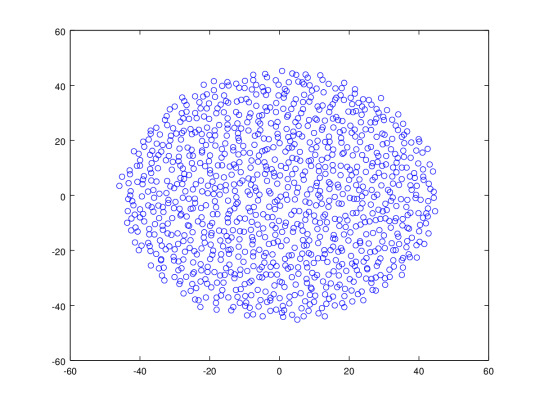
Although more speculative and less rigorously defined, analogs of universality have been proposed in biological and economic systems. For example, scaling laws in biological systems—such as the relation between metabolic rate and body mass (e.g., Kleiber’s law)—exhibit regular patterns across a vast range of organisms. Similarly, certain macroeconomic behaviors, such as power-law distributions in wealth and income or the scaling of urban infrastructure with population size, have been argued to reflect universal principles.
However, unlike in physics, the presence of complex, adaptive agents and feedback loops in these systems complicates the identification of precise universality classes or fixed points. Nonetheless, attempts to apply statistical physics and RG-like methods in these fields continue to be active areas of interdisciplinary research.
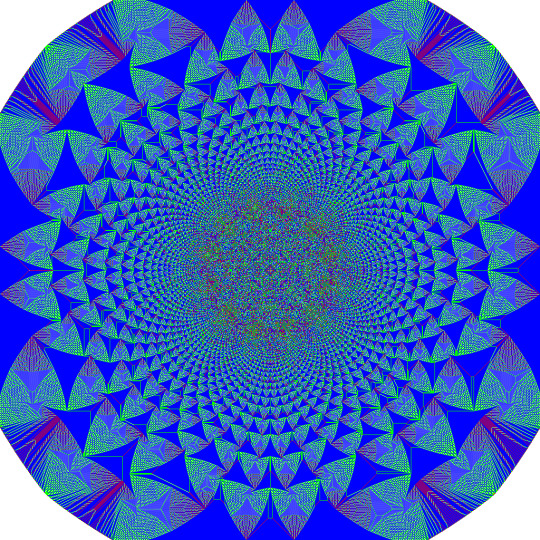
Universality in a formal mathematical sense often involves invariance under group actions, limit theorems, or fixed-point theory. For example:
Central Limit Theorem: One of the simplest manifestations of universality in probability theory. It states that the distribution of the sum of many independent random variables tends toward a Gaussian distribution, regardless of the underlying distribution, provided the variance is finite.
Random Matrix Theory: In the study of eigenvalues of large random matrices, universality appears in the distribution of spacing between eigenvalues, such as the Wigner-Dyson distribution. These distributions are universal across broad classes of ensembles, including those modeling nuclei, disordered systems, and even zeros of the Riemann zeta function.
Scaling Limits and Universality in Stochastic Processes: Brownian motion, the scaling limit of many discrete random walks, provides a classical example. Similarly, the Kardar-Parisi-Zhang (KPZ) universality class encompasses a wide range of stochastic growth models that, despite different dynamics, share the same large-scale statistical properties.
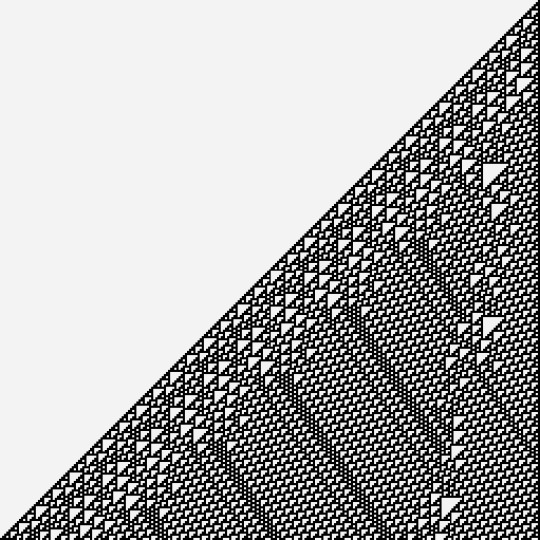
Universality challenges reductionist viewpoints by emphasizing that many macroscopic behaviors are insensitive to microscopic details. This has profound implications for how scientists model and understand complex systems. Rather than focusing on the exact microscopic state of a system, one can study representative models that capture the relevant symmetries and conservation laws to extract universal predictions.
It also exemplifies the power of abstraction and the importance of symmetry and scaling in nature. The idea that fundamentally different systems can exhibit identical critical behavior suggests that there are deep organizing principles underlying complex phenomena.
Furthermore, the concept has epistemological significance, influencing how knowledge is structured and how laws of nature are interpreted. It bridges the gap between the particular and the general, providing a unifying framework for diverse phenomena.
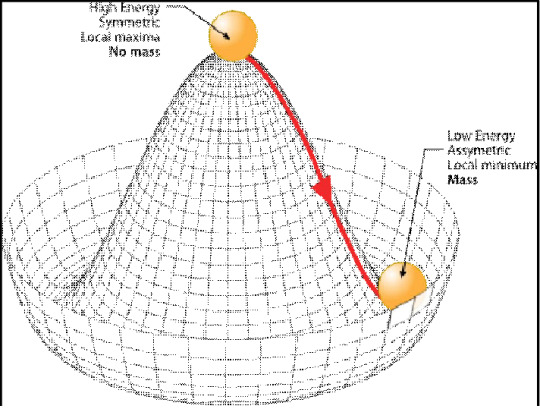
Universality is a cornerstone of modern science, offering a window into the fundamental structure of complex systems. From phase transitions and critical phenomena to dynamical chaos, quantum fields, algorithmic computation, and beyond, universality reveals the deep and often surprising regularities that transcend specific details. Its discovery and formalization represent one of the most profound insights in 20th-century physics, with ongoing implications for a broad range of disciplines in the 21st century. As science progresses, the principle of universality continues to guide our understanding of emergent behavior, scale invariance, and the interconnectedness of nature.
#universality#critical phenomena#scale laws#renormalization group#fractal geometry#chaos theory#complex systems#emergence#systems philosophy#interconnectedness#science thoughts#deep physics#mathematical beauty#physics aesthetic#theoretical physics#quantum field theory#computational theory#algorithmic aesthetic#symmetry breaking#phase transitions#feigenbaum constants#science lovers#philosophy of science#statistical mechanics#patterns in chaos#universal laws#scientific philosophy#epistemology
0 notes
Text
Sam glancing through the window: Hey, he's back!
Danny: Crude. What's he doing now?
Sam: He's just standing there. Menacingly.
Tucker: What did you do to this ghost to have it follow you around dude?
Danny: I might have wandered into his Hunt by accident. But he didn't even have up a claim scent!
Sam: What kind of ghost doesn't mark their territory?
Danny: That's what I said. I tried to talk to him about it, but he wouldn't hear me out, even though it was an emergency.
Tucker: What emergency?
Danny: There was a mugging going on. The guy with the gun was getting violent and I think he was about to kill a kid so I stepped in. Now Vengeance won't leave me alone
Sam: Vengeance?
Danny pointing at the figure on the roof across the street: He literally said "I am Vengeance". Whenever he does a lighting strike hits the sky so I'm going to respect it.
Sam opening the window: Hey Vengeance! Get out of here! Yeah, I'm talking to you! You wannabe Goth! Go on, get!
Danny: Sam don't interact with him! Now he's going to follow me around more!
Tucker: He might even go from staring at you from the shadows to like talking to you.
Danny: *sigh* I knew this move was a dumb idea.
Tucker: Hey, how else would we get Wayne Enterprise to fund our computer systems? We're this close to creating the best thing to ever happen to Tech Geeks!
Sam: GO ON GET! GET OUT OF HERE! SHOO SHOO!
Danny: Sam!
#dcxdpdabbles#dc x dp crossover#from a fic i never wrote#The trio are doing a computer startup#Its Bruce's first year as Batman#He is confused by the pretty man who thinks hes a ghost#spirit halloween ship#People dont think Batman is real so this doesn't help Danny theory
2K notes
·
View notes
Text

祇想一生跟你走
Extra↓

I liked the artstyle (new favorite brush wahoo!!) just rlly unfortunate i didnt like pretty much everything about this piece :pp it did change alot compared to the draft didnt stick to the vision.. I lost sight of the grind
#This can be used as a desktop wallpaper if you wish#They still looked young ish in this art sorry bout that#If their clothing is innacurate i just haven't finish s8 AND I REFUSE#Keith did infact stole those from his garden what a romantic....#Clouds.. Again??#klance#voltron legendary defender#vld#vld fanart#voltron#voltron fanart#keith kogane#lance mcclain#IM FIGHTING SO HARD ON THE COLORS IM ABOUT TO JUMP MY COMPUTER#< never learnt color theory#pretend i posted this on 520 cause its cuter that way
523 notes
·
View notes
Text
There Were Always Enshittifiers

I'm on a 20+ city book tour for my new novel PICKS AND SHOVELS. Catch me in DC TONIGHT (Mar 4), and in RICHMOND TOMORROW (Mar 5). More tour dates here. Mail-order signed copies from LA's Diesel Books.

My latest Locus column is "There Were Always Enshittifiers." It's a history of personal computing and networked communications that traces the earliest days of the battle for computers as tools of liberation and computers as tools for surveillance, control and extraction:
https://locusmag.com/2025/03/commentary-cory-doctorow-there-were-always-enshittifiers/
The occasion for this piece is the publication of my latest Martin Hench novel, a standalone book set in the early 1980s called "Picks and Shovels":
https://us.macmillan.com/books/9781250865908/picksandshovels
The MacGuffin of Picks and Shovels is a "weird PC" company called Fidelity Computing, owned by a Mormon bishop, a Catholic priest, and an orthodox rabbi. It sounds like the setup for a joke, but the punchline is deadly serious: Fidelity Computing is a pyramid selling cult that preys on the trust and fellowship of faith groups to sell the dreadful Fidelity 3000 PC and its ghastly peripherals.
You see, Fidelity's products are booby-trapped. It's not merely that they ship with programs whose data-files can't be read by apps on any other system – that's just table stakes. Fidelity's got a whole bag of tricks up its sleeve – for example, it deliberately damages a specific sector on every floppy disk it ships. The drivers for its floppy drive initialize any read or write operation by checking to see if that sector can be read. If it can, the computer refuses to recognize the disk. This lets the Reverend Sirs (as Fidelity's owners style themselves) run a racket where they sell these deliberately damaged floppies at a 500% markup, because regular floppies won't work on the systems they lure their parishioners into buying.
Or take the Fidelity printer: it's just a rebadged Okidata ML-80, the workhorse tractor feed printer that led the market for years. But before Fidelity ships this printer to its customers, they fit it with new tractor feed sprockets whose pins are slightly more widely spaced than the standard 0.5" holes on the paper you can buy in any stationery store. That way, Fidelity can force its customers to buy the custom paper that they exclusively peddle – again, at a massive markup.
Needless to say, printing with these wider sprocket holes causes frequent jams and puts a serious strain on the printer's motors, causing them to burn out at a high rate. That's great news – for Fidelity Computing. It means they get to sell you more overpriced paper so you can reprint the jobs ruined by jams, and they can also sell you their high-priced, exclusive repair services when your printer's motors quit.
Perhaps you're thinking, "OK, but I can just buy a normal Okidata printer and use regular, cheap paper, right?" Sorry, the Reverend Sirs are way ahead of you: they've reversed the pinouts on their printers' serial ports, and a normal printer won't be able to talk to your Fidelity 3000.
If all of this sounds familiar, it's because these are the paleolithic ancestors of today's high-tech lock-in scams, from HP's $10,000/gallon ink to Apple and Google's mobile app stores, which cream a 30% commission off of every dollar collected by an app maker. What's more, these ancient, weird misfeatures have their origins in the true history of computing, which was obsessed with making the elusive, copy-proof floppy disk.
This Quixotic enterprise got started in earnest with Bill Gates' notorious 1976 "open letter to hobbyists" in which the young Gates furiously scolds the community of early computer hackers for its scientific ethic of publishing, sharing and improving the code that they all wrote:
https://en.wikipedia.org/wiki/An_Open_Letter_to_Hobbyists
Gates had recently cloned the BASIC programming language for the popular Altair computer. For Gates, his act of copying was part of the legitimate progress of technology, while the copying of his colleagues, who duplicated Gates' Altair BASIC, was a shameless act of piracy, destined to destroy the nascent computing industry:
As the majority of hobbyists must be aware, most of you steal your software. Hardware must be paid for, but software is something to share. Who cares if the people who worked on it get paid?
Needless to say, Gates didn't offer a royalty to John Kemeny and Thomas Kurtz, the programmers who'd invented BASIC at Dartmouth College in 1963. For Gates – and his intellectual progeny – the formula was simple: "When I copy you, that's progress. When you copy me, that's piracy." Every pirate wants to be an admiral.
For would-be ex-pirate admirals, Gates's ideology was seductive. There was just one fly in the ointment: computers operate by copying. The only way a computer can run a program is to copy it into memory – just as the only way your phone can stream a video is to download it to its RAM ("streaming" is a consensus hallucination – every stream is a download, and it has to be, because the internet is a data-transmission network, not a cunning system of tubes and mirrors that can make a picture appear on your screen without transmitting the file that contains that image).
Gripped by this enshittificatory impulse, the computer industry threw itself headfirst into the project of creating copy-proof data, a project about as practical as making water that's not wet. That weird gimmick where Fidelity floppy disks were deliberately damaged at the factory so the OS could distinguish between its expensive disks and the generic ones you bought at the office supply place? It's a lightly fictionalized version of the copy-protection system deployed by Visicalc, a move that was later publicly repudiated by Visicalc co-founder Dan Bricklin, who lamented that it confounded his efforts to preserve his software on modern systems and recover the millions of data-files that Visicalc users created:
http://www.bricklin.com/robfuture.htm
The copy-protection industry ran on equal parts secrecy and overblown sales claims about its products' efficacy. As a result, much of the story of this doomed effort is lost to history. But back in 2017, a redditor called Vadermeer unearthed a key trove of documents from this era, in a Goodwill Outlet store in Seattle:
https://www.reddit.com/r/VintageApple/comments/5vjsow/found_internal_apple_memos_about_copy_protection/
Vaderrmeer find was a Apple Computer binder from 1979, documenting the company's doomed "Software Security from Apple's Friends and Enemies" (SSAFE) project, an effort to make a copy-proof floppy:
https://archive.org/details/AppleSSAFEProject
The SSAFE files are an incredible read. They consist of Apple's best engineers beavering away for days, cooking up a new copy-proof floppy, which they would then hand over to Apple co-founder and legendary hardware wizard Steve Wozniak. Wozniak would then promptly destroy the copy-protection system, usually in a matter of minutes or hours. Wozniak, of course, got the seed capital for Apple by defeating AT&T's security measures, building a "blue box" that let its user make toll-free calls and peddling it around the dorms at Berkeley:
https://512pixels.net/2018/03/woz-blue-box/
Woz has stated that without blue boxes, there would never have been an Apple. Today, Apple leads the charge to restrict how you use your devices, confining you to using its official app store so it can skim a 30% vig off every dollar you spend, and corralling you into using its expensive repair depots, who love to declare your device dead and force you to buy a new one. Every pirate wants to be an admiral!
https://www.vice.com/en/article/tim-cook-to-investors-people-bought-fewer-new-iphones-because-they-repaired-their-old-ones/
Revisiting the early PC years for Picks and Shovels isn't just an excuse to bust out some PC nostalgiacore set-dressing. Picks and Shovels isn't just a face-paced crime thriller: it's a reflection on the enshittificatory impulses that were present at the birth of the modern tech industry.
But there is a nostalgic streak in Picks and Shovels, of course, represented by the other weird PC company in the tale. Computing Freedom is a scrappy PC startup founded by three women who came up as sales managers for Fidelity, before their pangs of conscience caused them to repent of their sins in luring their co-religionists into the Reverend Sirs' trap.
These women – an orthodox lesbian whose family disowned her, a nun who left her order after discovering the liberation theology movement, and a Mormon woman who has quit the church over its opposition to the Equal Rights Amendment – have set about the wozniackian project of reverse-engineering every piece of Fidelity hardware and software, to make compatible products that set Fidelity's caged victims free.
They're making floppies that work with Fidelity drives, and drives that work with Fidelity's floppies. Printers that work with Fidelity computers, and adapters so Fidelity printers will work with other PCs (as well as resprocketing kits to retrofit those printers for standard paper). They're making file converters that allow Fidelity owners to read their data in Visicalc or Lotus 1-2-3, and vice-versa.
In other words, they're engaged in "adversarial interoperability" – hacking their own fire-exits into the burning building that Fidelity has locked its customers inside of:
https://www.eff.org/deeplinks/2019/10/adversarial-interoperability
This was normal, back then! There were so many cool, interoperable products and services around then, from the Bell and Howell "Black Apple" clones:
https://forum.vcfed.org/index.php?threads%2Fbell-howell-apple-ii.64651%2F
to the amazing copy-protection cracking disks that traveled from hand to hand, so the people who shelled out for expensive software delivered on fragile floppies could make backups against the inevitable day that the disks stopped working:
https://en.wikipedia.org/wiki/Bit_nibbler
Those were wild times, when engineers pitted their wits against one another in the spirit of Steve Wozniack and SSAFE. That era came to a close – but not because someone finally figured out how to make data that you couldn't copy. Rather, it ended because an unholy coalition of entertainment and tech industry lobbyists convinced Congress to pass the Digital Millennium Copyright Act in 1998, which made it a felony to "bypass an access control":
https://www.eff.org/deeplinks/2016/07/section-1201-dmca-cannot-pass-constitutional-scrutiny
That's right: at the first hint of competition, the self-described libertarians who insisted that computers would make governments obsolete went running to the government, demanding a state-backed monopoly that would put their rivals in prison for daring to interfere with their business model. Plus ça change: today, their intellectual descendants are demanding that the US government bail out their "anti-state," "independent" cryptocurrency:
https://www.citationneeded.news/issue-78/
In truth, the politics of tech has always contained a faction of "anti-government" millionaires and billionaires who – more than anything – wanted to wield the power of the state, not abolish it. This was true in the mainframe days, when companies like IBM made billions on cushy defense contracts, and it's true today, when the self-described "Technoking" of Tesla has inserted himself into government in order to steer tens of billions' worth of no-bid contracts to his Beltway Bandit companies:
https://www.reuters.com/world/us/lawmakers-question-musk-influence-over-verizon-faa-contract-2025-02-28/
The American state has always had a cozy relationship with its tech sector, seeing it as a way to project American soft power into every corner of the globe. But Big Tech isn't the only – or the most important – US tech export. Far more important is the invisible web of IP laws that ban reverse-engineering, modding, independent repair, and other activities that defend American tech exports from competitors in its trading partners.
Countries that trade with the US were arm-twisted into enacting laws like the DMCA as a condition of free trade with the USA. These laws were wildly unpopular, and had to be crammed through other countries' legislatures:
https://pluralistic.net/2024/11/15/radical-extremists/#sex-pest
That's why Europeans who are appalled by Musk's Nazi salute have to confine their protests to being loudly angry at him, selling off their Teslas, and shining lights on Tesla factories:
https://www.malaymail.com/news/money/2025/01/24/heil-tesla-activists-protest-with-light-projection-on-germany-plant-after-musks-nazi-salute-video/164398
Musk is so attention-hungry that all this is as apt to please him as anger him. You know what would really hurt Musk? Jailbreaking every Tesla in Europe so that all its subscription features – which represent the highest-margin line-item on Tesla's balance-sheet – could be unlocked by any local mechanic for €25. That would really kick Musk in the dongle.
The only problem is that in 2001, the US Trade Rep got the EU to pass the EU Copyright Directive, whose Article 6 bans that kind of reverse-engineering. The European Parliament passed that law because doing so guaranteed tariff-free access for EU goods exported to US markets.
Enter Trump, promising a 25% tariff on European exports.
The EU could retaliate here by imposing tit-for-tat tariffs on US exports to the EU, which would make everything Europeans buy from America 25% more expensive. This is a very weird way to punish the USA.
On the other hand, not that Trump has announced that the terms of US free trade deals are optional (for the US, at least), there's no reason not to delete Article 6 of the EUCD, and all the other laws that prevent European companies from jailbreaking iPhones and making their own App Stores (minus Apple's 30% commission), as well as ad-blockers for Facebook and Instagram's apps (which would zero out EU revenue for Meta), and, of course, jailbreaking tools for Xboxes, Teslas, and every make and model of every American car, so European companies could offer service, parts, apps, and add-ons for them.
When Jeff Bezos launched Amazon, his war-cry was "your margin is my opportunity." US tech companies have built up insane margins based on the IP provisions required in the free trade treaties it signed with the rest of the world.
It's time to delete those IP provisions and throw open domestic competition that attacks the margins that created the fortunes of oligarchs who sat behind Trump on the inauguration dais. It's time to bring back the indomitable hacker spirit that the Bill Gateses of the world have been trying to extinguish since the days of the "open letter to hobbyists." The tech sector built a 10 foot high wall around its business, then the US government convinced the rest of the world to ban four-metre ladders. Lift the ban, unleash the ladders, free the world!
In the same way that futuristic sf is really about the present, Picks and Shovels, an sf novel set in the 1980s, is really about this moment.
I'm on tour with the book now – if you're reading this today (Mar 4) and you're in DC, come see me tonight with Matt Stoller at 6:30PM at the Cleveland Park Library:
https://www.loyaltybookstores.com/picksnshovels
And if you're in Richmond, VA, come down to Fountain Bookshop and catch me with Lee Vinsel tomorrow (Mar 5) at 7:30PM:
https://fountainbookstore.com/events/1795820250305

If you'd like an essay-formatted version of this post to read or share, here's a link to it on pluralistic.net, my surveillance-free, ad-free, tracker-free blog:
https://pluralistic.net/2025/03/04/object-permanence/#picks-and-shovels
#pluralistic#picks and shovels#history#web theory#marty hench#martin hench#red team blues#locus magazine#drm#letter to computer hobbyists#bill gates#computer lib#science fiction#crime fiction#detective fiction
498 notes
·
View notes
Text
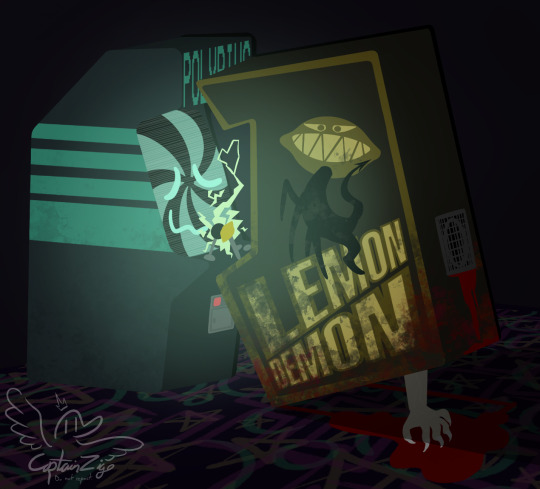
toxic arcade cabinet yaoi
#polybius#lemon demon#cabinet man#toxic yaoi#arcade cabinet#retro tech#arcade#objectum#computer objectum#selfcest#cryptid#conspiracy theories#urban legends#mk ultra#arcadecore#arcade carpet#sinneslöschen#sonneslochen#objectophilia#sci fi art#christmas eve#spirit phone#conspiracy theory#urban legend#creepypasta#niel cicierega#mind control#80s tech#crt#video games
376 notes
·
View notes
Text
In the twentieth century, few would have ever defined a truck driver as a ‘cognitive worker’, an intellectual. In the early twenty-first, however, the application of artificial intelligence (AI) in self-driving vehicles, among other artefacts, has changed the perception of manual skills such as driving, revealing how the most valuable component of work in general has never been just manual, but has always been cognitive and cooperative as well. Thanks to AI research – we must acknowledge it – truck drivers have reached the pantheon of intelligentsia. It is a paradox – a bitter political revelation – that the most zealous development of automation has shown how much ‘intelligence’ is expressed by activities and jobs that are usually deemed manual and unskilled, an aspect that has often been neglected by labour organisation as much as critical theory.
– Matteo Pasquinelli, The Eye of the Master: A Social History of Artificial Intelligence (2023)
#Matteo Pasquinelli#The Eye of the Master#Social History#Social theory#AI#Artificial Intelligence#Science#Scientism#Labour#Capitalism#Marxism#Malaise#Computer Science#Technology#Words#Quote#Writing#Text#Reading#Books#⏳
159 notes
·
View notes
Text
bro wdym the Pope was a math major from Villanova in undergrad im crying TT TT TT what is the catholic church's official stance on P vs NP please i have a theory of comp exam, can he just, like, announce that P=NP pleaseeeeee
121 notes
·
View notes
Text



Asgore. What. Have. You. Been. Doing?
#deltarune spoilers#deltarune chapters 3 & 4 spoilers#deltarune chapter spoilers#asgore dreemurr#deltarune theory#not a Knight theory#I think he did make the dark fountains in the computer lab and the church#deltarune chapters 3 & 4#deltarune
85 notes
·
View notes
Text
Something about what Venti said


Doesn't this sound familiar?
Oh, right. Kaeya.

Kaeya, in his hangout quest to be specific.

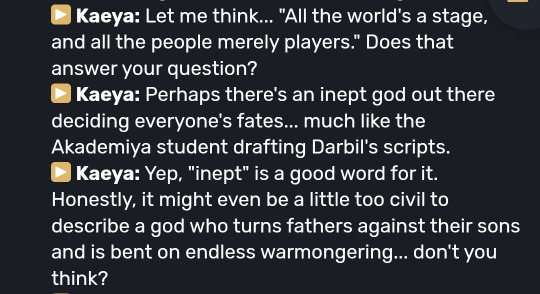
and finally

#yes im posting another one. this kept me up at night so i might as well#my company computer is booting up as i type this out#and that is the level of multitasking im doing for kaeya theory#text heavy images#kaeya#kaeya alberich#gi kaeya#kaeya theory#genshin theory#wait does this even count as a theory? im just pointing this out lmao#oh my pc is booted bye just tell me if i need to add more tags#genshin impact 5.6#gi 5.6 spoilers#genshin spoilers
72 notes
·
View notes
Text
TMAGP Theory: Tria Prima
Spoiler alert/disclaimer: Written after The Magnus Protocol episode 34; also spoilers for The Magnus Archives
I don't know if this idea has been properly explored yet, but I have had a weeklong hyperfixation where I've delved into alchemy and tried to figure out the inner workings of TMAGP universe. This theory is half-boiled at best, and I apologise if I've misunderstood any of the basic concepts. It seems like even alchemists never fully agreed on them, so they're contradicting each other a lot. That being said, let's get into it.
Perspective Reset
First of all, I think we are collectively still too hung up on the Fears as entities or powers. It's very tempting to classify things with the same framework we're familiar with (and conditioned to), but I think it's preventing us from seeing the bigger picture. Prior to the end of TMA, it's possible that no entities ever even existed in this universe, but the incidents have been taking place for a long time. The creators have also explicitly said that they wanted to create a new rule set, and I doubt that they'd build it with the same blocks. Because of this, I set out to find a set of rules that has nothing to do with the fears.
Classical Elements (Very Briefly)
I will oversimplify this for my sanity and yours. We have the four classical elements: fire, air, water and earth. In the classical worldview, these make up everything on Earth. Each element has two corresponding properties, as you can see in the figure below (fire is hot and dry etc). The elements are in a constant process of circulating and flowing, breaking apart and coming together (sand into water, water into stone, stone into wood...), but fire and air are considered more active and volatile while water and earth are more passive and stable. The rest of the universe is filled with the fifth element, quintessence or aether. It is considered heavenly and perfect and completely unchangeable.

The Three Principles (Tria Prima)
Later alchemists made the addition of (first two and then) three principles that work on the elements and in conjunction with them. These principles were used to describe the alchemical process and its parts, but they also had more metaphysical implications. These are the foundation of my theory.
Salt 🜔: Aka. Corpus or The Body. Things that are solid and stable but also corruptible. The dust that's left behind after something is burned. Associated with earth, water and the property of coldness. In humans, associated with the physical body and therefore physical health. Salt is also associated with preservation and sometimes even rebirth. It's what's left behind after the alchemical stage of putrefication, and therefore what undergoes purification.
Mercury ☿: Aka. Spiritus or The Mind. Things that are volatile and soluble. The alchemical solvent or the smoke that rises from a fire. Considered the perfect agent because it demonstrates properties of both a liquid and a solid. The principle of flowing freely between elements and perhaps even heaven and earth. Associated with air, water and the property of wetness. In humans, it's the mind, or the intellect, knowledge and rationality of a person. Some seem to consider it the universal, platonic idea of thought, as mercury wouldn't be restricted by an individual body.
Sulphur 🜍: Aka. Anima or The Soul. Things that combust, but also the principle of combustibility. The flame that manifests when something is burned. Associated with fire, air and the property of hotness. With fire and air being the most active elements, sulphur is also the catalyst for change. In humans, associated with the soul, or the consciousness that links the body to the mind. It's the emotions, ambitions and desires that animate the body.
Why have I given you the symbols? Because they're all there on the OIAR logo:

(I also circled aether because I thought I'd talk about it later but decided not to, so you're free to make your own conclusions)
I currently believe that these three principles are omnipresent in the Magnus Protocol universe. They're just part of the makeup of the universe, causing no one harm. At least, when they're in balance.
The Theory - It's All About Balance
There's been a lot of talk about balance by now.
"The institute, alchemy, all of it. "It’s all about balance. Dua prima, four elements, seven planets, it’s all the same. You’ve got to keep things balanced. And if something is missing, if someone is misplaced, the equation doesn’t balance… and that’s when things get bad…" (Celia, episode 30)
Here Celia mentions dua prima, which (as I alluded to before) is an earlier theory surrounding Sulphur and Mercury. Salt was proposed as the third principle in a later theory, but by now the tria prima seem to be more widely accepted.
"Not that anyone cares as long as it all balances, right? Not too much mercury or the world ends, not too much sulfur or we all go mad…" (Colin, episode 19)
Huh.
So, let me lay out the actual theory.
The principles usually strive for balance, because it's their natural state. However, sometimes the balance is skewed by human action or some other unexpected force. This imbalance can happen on an individual level or it can affect objects (which then become "cursed") or locations (which then become "poisoned"). In fact, the Magnus Institute calls such poisoned locations loci (singular "locus"). I also hypothesise that this is how the OIAR categorises their incidents (1. individuals - 2. locations - 3. objects).
When there is an imbalance, the affected person/area/object starts to display an unnatural amount or lack of one principle. For example, if there's an abundance of salt, we may see people or things slow down, become passive, even crystallise. Bodies preserved despite obvious corrosion, infections that putrefy and then purify flesh into a "perfect" form. The clearest example I can think of would be episode 3, where the character quite literally transmutes into a tree. Or episode 23 where a character inserts a piece of coral under her skin and begins to paralyse as it grows out of her. If you absolutely have to compare to TMA, I'd say a lot of Flesh, Corruption or Buried statements would fit under salt. It is associated with earth, water and literal bodies, after all.
Abundance in mercury would manifest as things getting a little weird, unstable and volatile, but in a subtle, flowy way. Changing architecture, people seeming odd, things dissolving into others, time or dimensions being unstable, perhaps the limits of a human psyche being broken. I'm thinking of the liminal spaces from episode 8 or the pier from episode 33. The fog is an especially fitting link, what with fog being a manifestation of air and water. I also think the entire Hill Top Centre has been affected. And now that I started, you could easily make connections to the Stranger, the Lonely, the Spiral and the Eye. Which brings an ironic twist to Colin's statement. Too much "mercury" already ended the world once.
Abundance of sulphur would bring out more abrupt changes, it would twist people's passions into unhealthy obsessions, drive people to anger and senseless bloodlust, give consciousness to the unconscious and animate the inanimate. In fact, in episode 19, the character says of Newton's dog: "such a creature must by all natural law lack that essential and ephemeral anima." Another case of an unexpectedly conscious thing would be Liverpool (episode 32), who is coincidentally also incredibly angry. I also think Ink5oul's tattoos have an element of sulphur, not only because their first stolen design (sun with a dot in the middle) evokes the alchemical symbol for sun. In TMA sulphur would probably be attributed to the Slaughter, the Hunt, the Desolation or the like.
I have noticed that a lot of TMAGP incidents involve an unhealthy desire, passion, obsession or (literal and metaphorical) hunger. It's also noticeable that the symbol for sulphur appears on the OIAR logo four times (once in each corner of the square representing the elements). I don't know if this is a stylistic choice or if it has deeper implications. But it's there. And as Colin implies, it could be bad.
The beautiful part about this framework is that it doesn't set any clear limits between the categories, because the balance can be disrupted in many ways. Lack of salt means abundance of sulphur and mercury, and their distribution may also vary greatly. I also don't know if the OIAR ranks their incidents in these terms. They probably have some needlessly complicated system that's practically undecipherable. (I took a long time trying to figure out the DPHW and I'm no closer to solving it.)
End note
I have some thoughts about what the goals of the OIAR and the Magnus Institute are based on this theory, but this post is too long now. May make a follow-up eventually. Or procrastinate until they just tell us.
Edit: I have now written my theory posts on the OIAR and the Magnus Institute. Go read if you're so inclined.
#the magnus protocol#tmagp#tmagp podcast#tmagp spoilers#tmagp theory#tmagp tria prima theory#the magnus archives#tma spoilers#tma#tma podcast#fear entities#red string theory#magnussing#help this hyperfixation has consumed me#i need sleep#before my computer eats me
77 notes
·
View notes
Text
Today I re-listened to the first episode of TMAGP and the part surrounding the reddit thread about the magnus archives caught my eye (pun intended)


I dont think the archivst creature is John. I think the reddit user RedCanary was turned into the archivist that we see later in the season
#the magnus protocol#the magnus protocol spoilers#tmagp#magpod#rusty quill#johnathan sims#id be so happy if he truly was just in the computer#also if someone else has mentioned this forgive me#tmagp theory#tmagp thoughts#the nerd rants
62 notes
·
View notes
Text

we’ll start at the end
until we begin.
#gravity falls#gravity falls fanart#my fanart#stanley pines#(or is he....????👀)#same coin theory#STILL OBSESSED OVER SAME COIN. GOD.#the caption comes from what appears on the website computer after you type in “baaaa / say baaaa”#which kind of gave off same coin theory to me???? (or maybe i’m just severely brain rotted about it)#this is kind of a better ver. of the drawing i made in november lmao#edit: fixed the code on the bottom :))
110 notes
·
View notes
Note
im sure Eklutna will be okay. she will be so okay she will immediately take her newborns to the Crude Oil Moonpool and baptise them like god intended.
better yet, she will insist on giving birth by the pool, since its the closest way of interacting with StarClan. and they will help her. surely it will end well.
(pls dont let your cats give birth and dip their infants in crude oil.)
You're so right. Eklutna CAN'T die. She has PLANS.

If she dies who's gonna put her kids in the world's most dangerous dunk tank??? Also, yes, she HAS visited the Black Water Pool for a blessing, and yes, the healers were pissed, but they just don't understand. They don't understand that she is Starclan's special little girl.
(P.S. thank you for including your own disclaimer. Wonderful.)

Yes. Eklutna. All the time. She was one of the cats who first discovered it, then after getting into a fight with the rest of Ghostclan over whether or not they should tell the other clans about the Black Water Pool she limped her bleeding ass there to give herself a blessing before she continued up the mountain to Loudclan. Now she's taken a dip while pregnant to get Starclan to bless her unborn kits, which is a BIG taboo. But what are the healers to do? How do you punish someone for participating too enthusiastically in your state sponsored religion? She's not the only one to ever do it, of course, she's just kinda the most egregious about it.

-- Eklutna, 2024

*:・゚✧*:・゚✧Drama✧・゚: *✧・゚:*
#loudclanasks#loudclan#ocs#clan generator#clangen#warrior cats#warriors oc#EklutnaLC#bonus art#call me the clown for doing a complex pose then completely hiding it in shadow and oil#she's meant to be grooming herself but it did not translate well with the way my laptop screen nukes the colors.#oh well. we live and we learn.#if you're looking at this on a computer just know the colors are not coloring. i'm better at color theory than this makes me look i swear
243 notes
·
View notes
Text
Pokemon theory time
So Porygon, right? For the longest time I found it weird that it was Normal type instead of Electric, despite being made of computer code.

But the thought occurred to me: when any Pokemon gets stored in the PC, they must get converted to code from their Pokeballs, right? That doesn't make them Electric type, all Pokemon can be stored that way.
So my theory is: What if Porygon was used as a prototype to test the concept of the Pokemon Storage System?
(yes, this would mean that Bill would have worked on Porygon)
Creating Porygon would make sense as a way to test if converting a Pokemon into data was possible, and it wouldn't require testing on any existing Pokemon.
Hence the Normal typing: if Porygon was created to be an example of a "generic" Pokemon, Normal would be the most logical option for its creators to pick.
This could also explain the Porygon line's signature moves, Conversion and Conversion 2, which allow Porygon and its evolutions to change into any type. The PSS would likely have needed a way to make sure it could preserve a Pokemon's type, so having Porygon contain data to test all of them makes sense.
317 notes
·
View notes
Text

[237] Very vaguely reminiscent of an owl and somewhat absolutely horrifying
#237#xisuma#xisumavoid#daily xisuma#hermitcraft#meant to doodle something about the fact that I am just casually COMPOSING ? MUSIC ? for my MUSIC THEORY CLASS ?#music theory isn't REAL#there's no way I sit down and music comes out of computer
56 notes
·
View notes